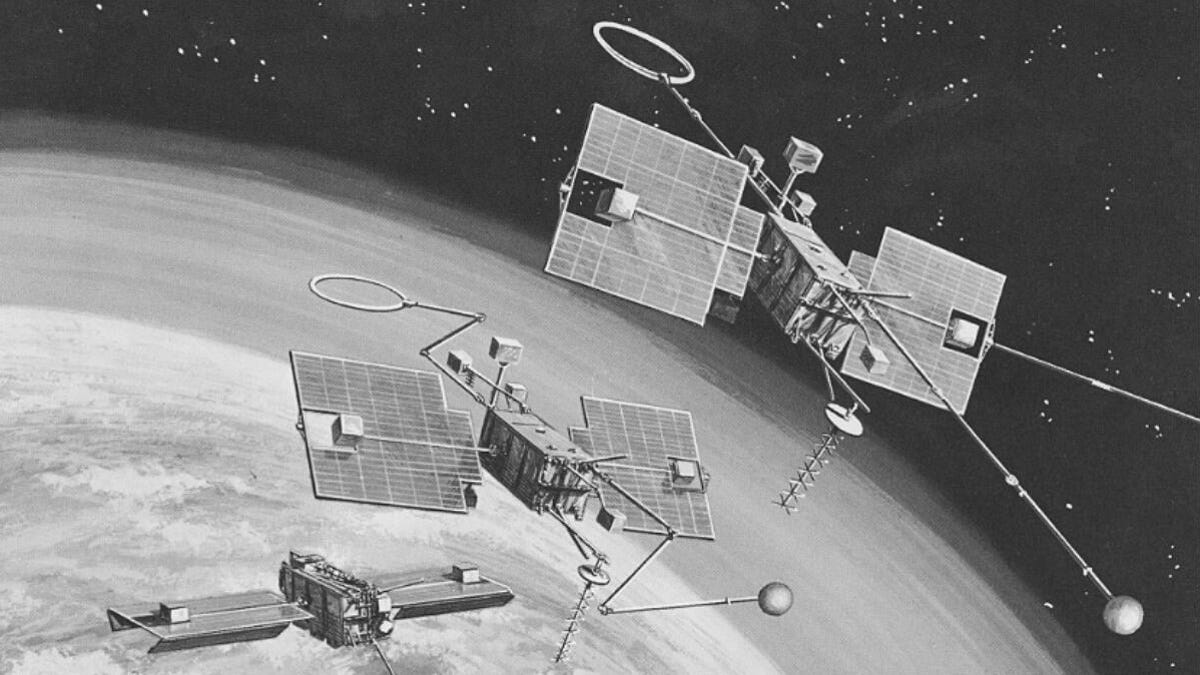Watch an ancient NASA satellite disintegrate spectacularly in the sky
A piece of space history met its end over the weekend when OGO-1 burned up.

This NASA illustration shows the the deployment of an OGO satellite.
NASA's OGO-1 satellite was an artifact from an earlier era in the space age. Launched in 1964, it was on a mission to study our planet's magnetosphere. Its decades-long journey around our planet came to end over the weekend when the satellite finally reentered Earth's atmosphere and disintegrated. Its final moments were caught on video.
OGO-1 was part of NASA's Orbiting Geophysical Observatories project. The mission officially ended in 1971, but it lingered in orbit all these years as one more piece of space junk.
The satellite came back to NASA's attention when the University of Arizona's Catalina Sky Survey (CSS) spotted it on Aug. 25 while searching for asteroids that might impact Earth. Researchers investigated and discovered it was not an asteroid, but rather the forgotten satellite.
The PYF Spotters community on Facebook normally spends its energy on filming airplanes, but was able to capture a video of OGO-1 reentering over Tahiti. It looks like some sort of strange meteor as it blasts across a blue sky, falling to pieces as it goes.
Satellite OGO-1 entering and disintegrating in the Polynesian sky. 29/08/202029/08/2020. Grâce aux informations de l'Association Proscience peut-être avez-vous pu observer le satellite OGO-1 entrant et se désintégrant dans le ciel Polynésien. Si ça n'est pas le cas, voici une petite vidéo! OGO-1 était un satellite lancé en 1964 et qui a fini son exploitation en 1971.
Posted by PYF Spotters on Saturday, August 29, 2020
The Virtual Telescope Project also caught sight of OGO-1 prior to reentry. This view makes it look like a small dot against a background of stars.
Here's OGO-1 (follow the arrow) still in orbit prior to its reentry as seen by the Virtual Telescope Project.
Virtual Telescope Project lead Gianluca Masi was able to document some of the satellite's last moments of existence. This was a testament to the astronomy community's ability to calculate and track OGO-1's orbit.
"While OGO-1 was the first spacecraft to be launched in the OGO series, it will be the last to return home as all other five spacecraft have already decayed from orbit and safely reentered Earth's atmosphere, landing in various parts of the planet's oceans," said NASA in a release last week.
The satellite was never in danger of causing damage on the ground. NASA called its reentry a "a normal final operational occurrence for retired spacecraft."
OGO-1 was long ago assigned to the history books, but its fate is a reminder of the growing issue of space junk, objects that have outlived their usefulness, but remain in orbit as potential hazards to other spacecraft. Researchers are working on ways to mitigate the problem, but we have a long way to go to clean up the space around us.

